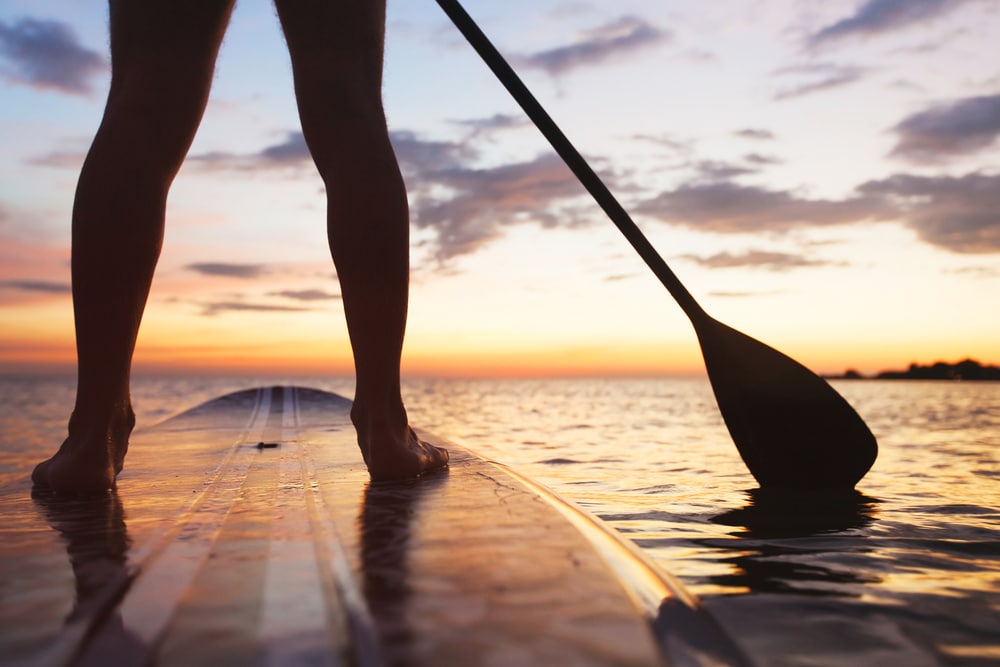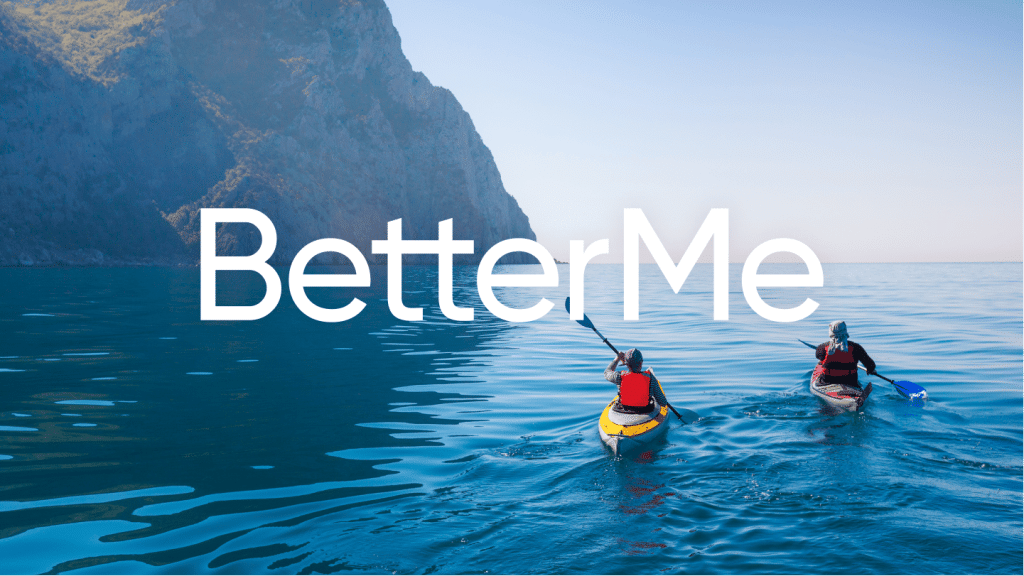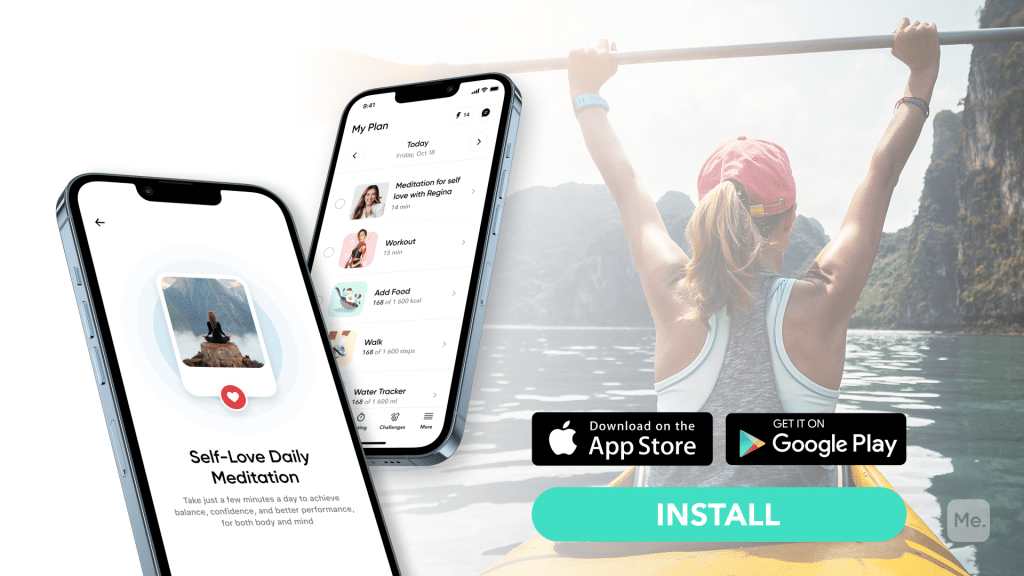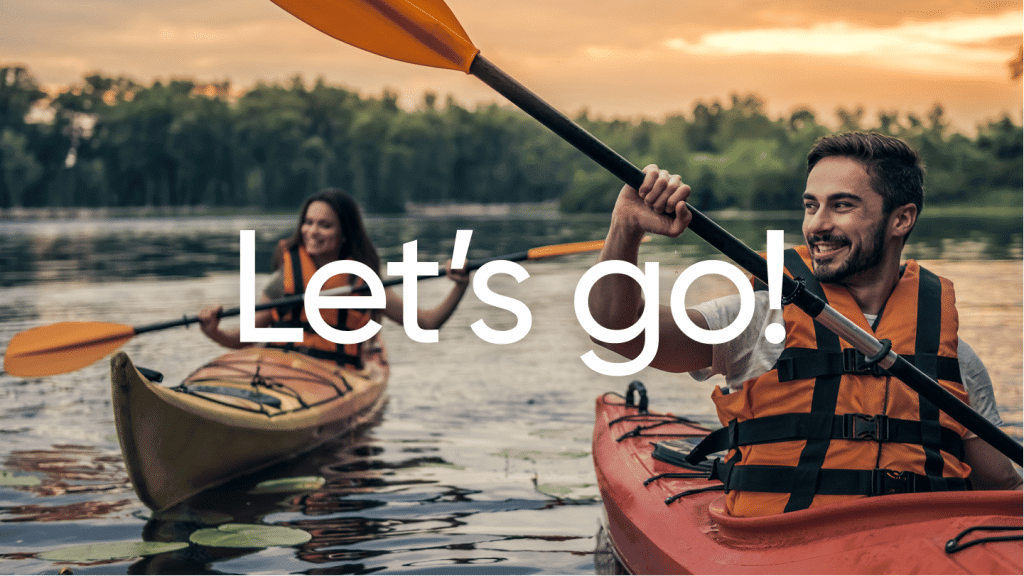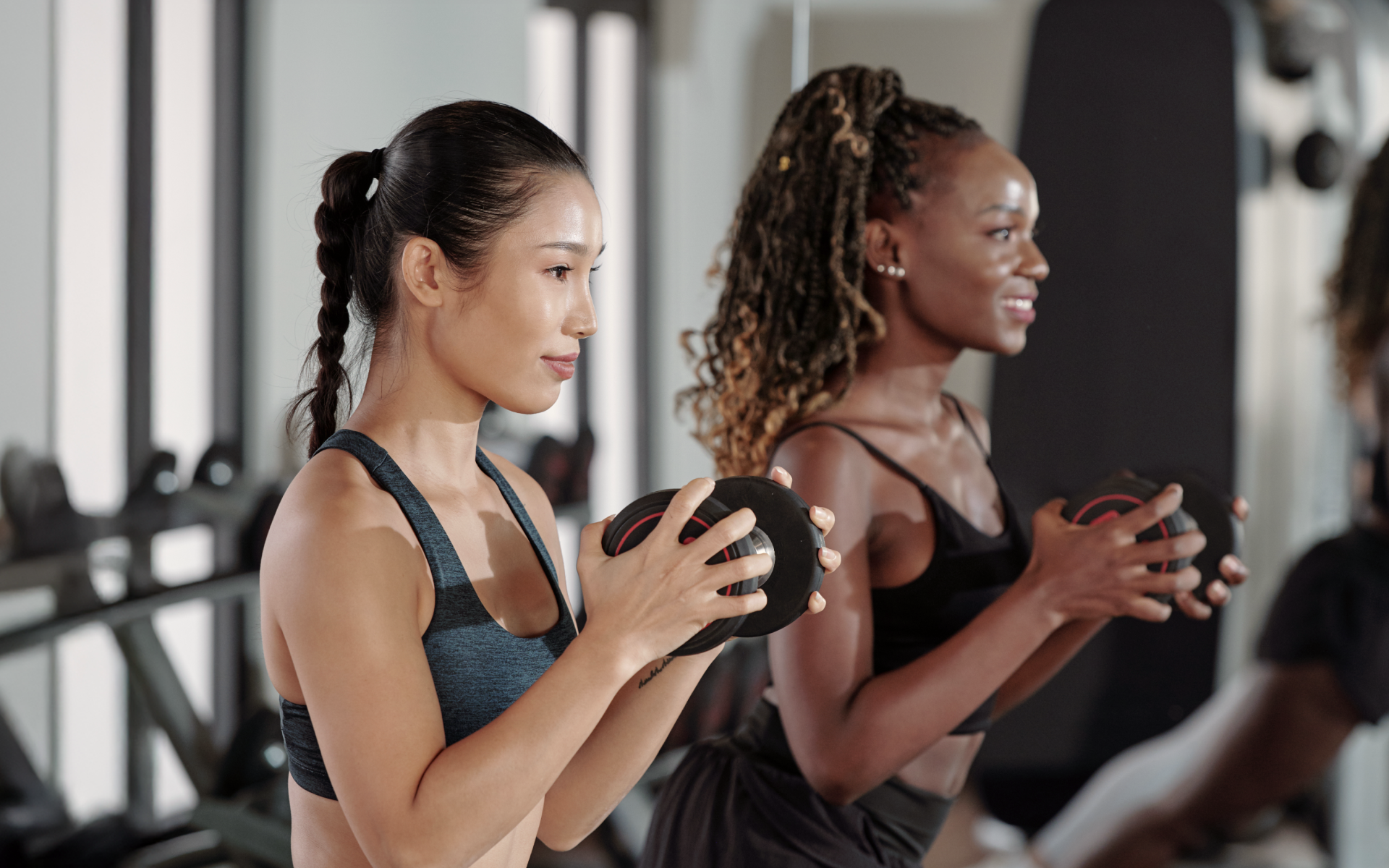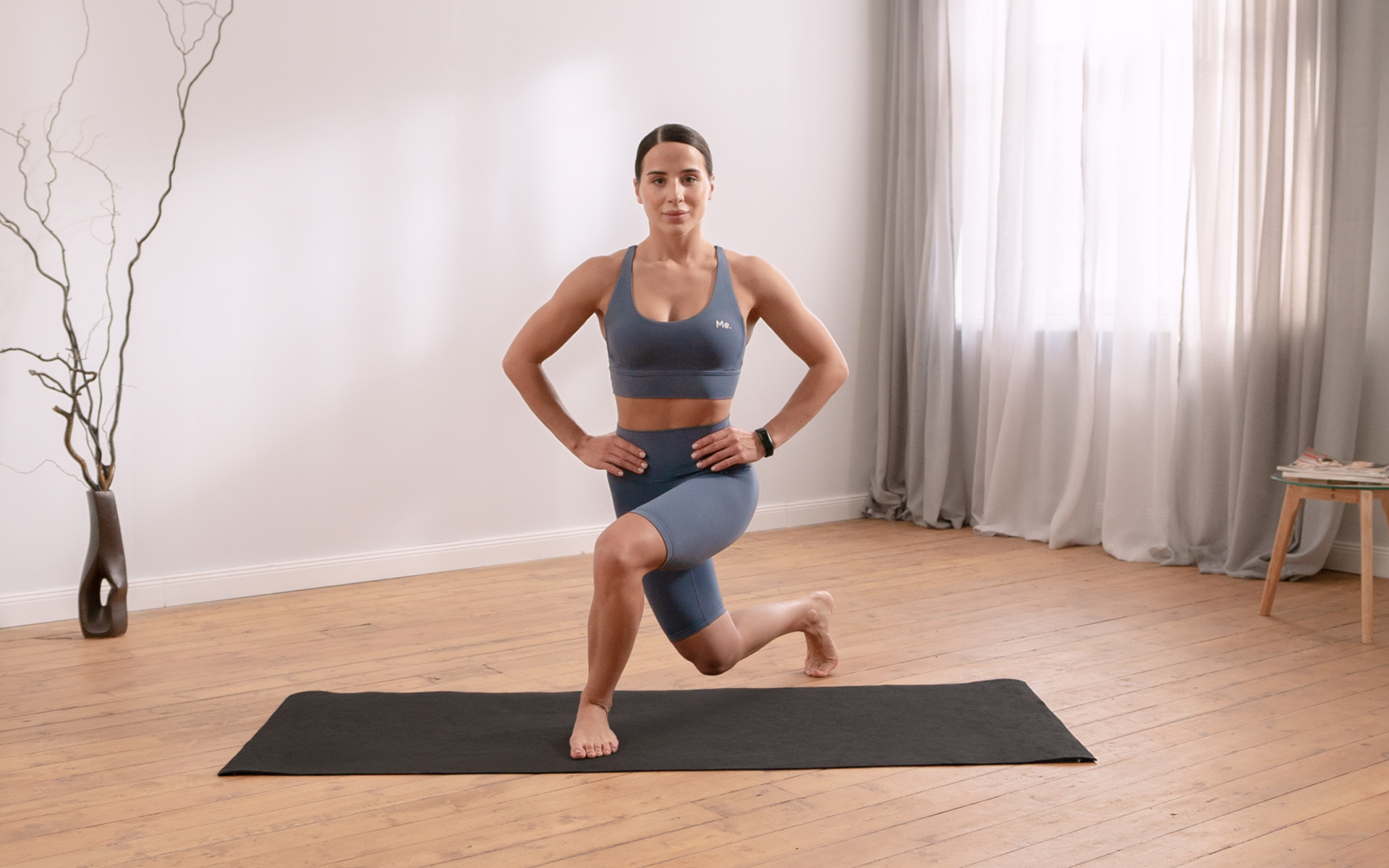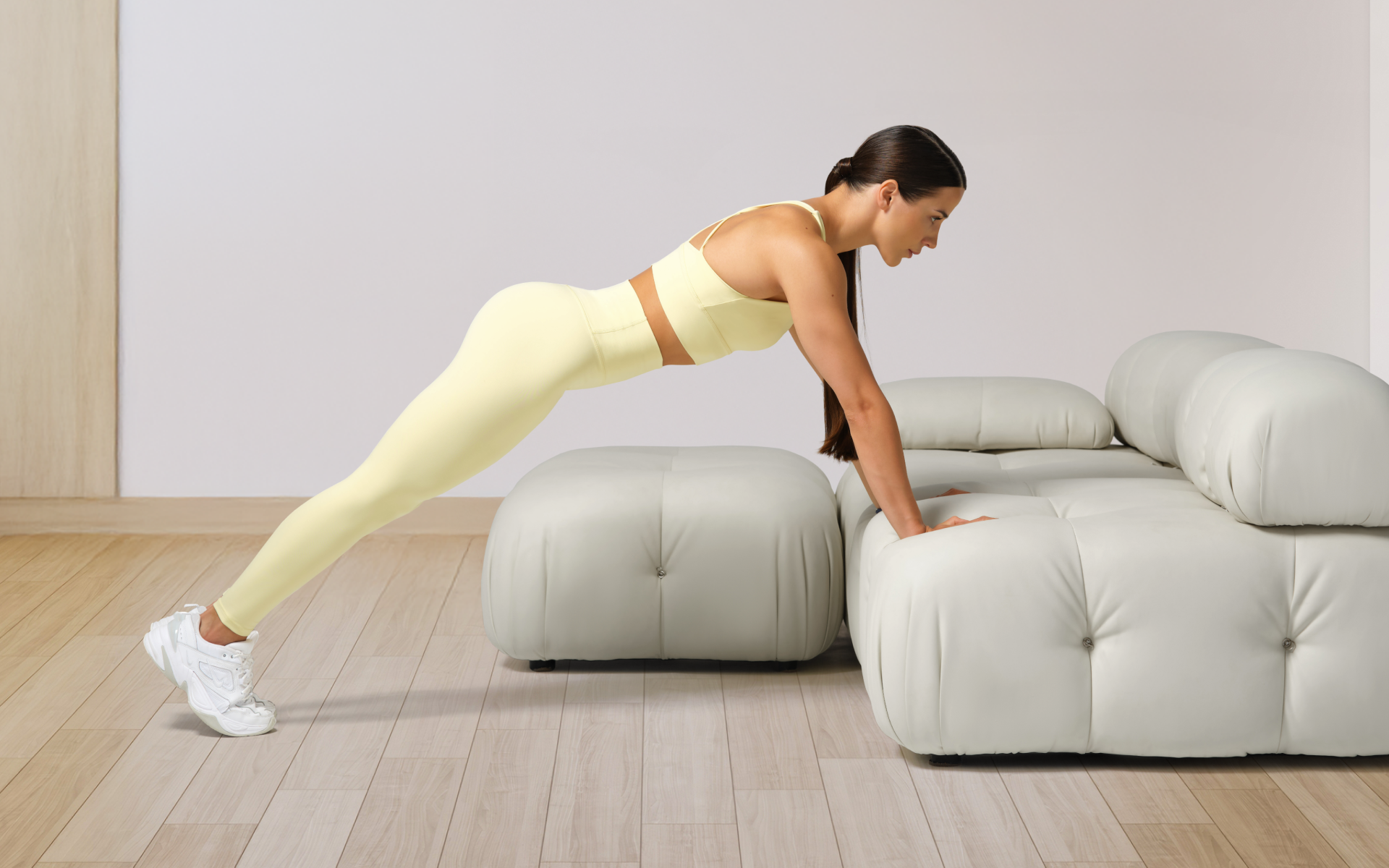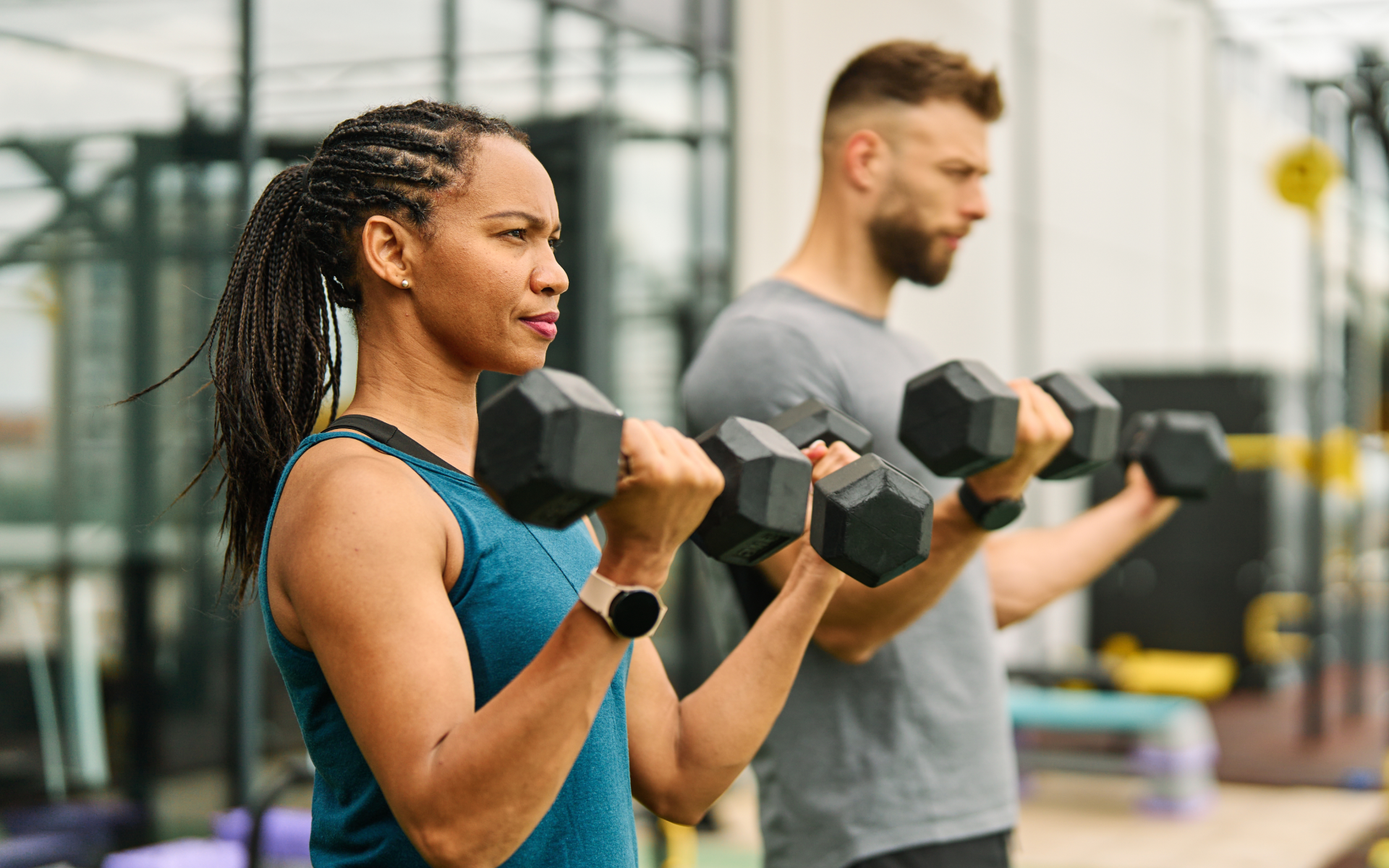As far as watersports go, stand up paddle boarding (SUP) is relatively new. It’s thought to have originated in Hawaii in the 1940s and 50s, when surfing instructors would use long boards to paddle out to their students. In the past decade or so, SUP has exploded in popularity, with people of all ages and abilities enjoying this fun, challenging sport. If you’re thinking about trying stand up paddle boarding, then this beginner’s guide is for you. We’ll go over the basics of stand up paddle boarding, from what equipment you need to get started, to some tips and techniques for paddling your way to success. Let’s get started!
Get your personalized
meal plan!
What Is Stand Up Paddle Boarding?
Stand up paddle boarding is a water sport in which participants stand on a board and use a paddle to propel themselves across the water. It’s similar to surfing, but because you’re upright on the board, it’s also a great workout for your core and upper body.
SUP is a great way to enjoy the outdoors, get some exercise, and learn a new skill. It’s also relatively easy to learn, which makes it a great activity for beginners and families.
As far as health and fitness, this sport offers the following benefits (1):
- It’s a great cardio workout
- It strengthens your core and upper body
- It improves balance and coordination
- It’s low impact, so it’s easy on your joints
What Equipment Do You Need To SUP?
The first thing you’ll need for stand up paddle boarding is, of course, a paddle board. When you’re just starting out, it’s best to rent or borrow a board so that you can get a feel for the sport and figure out what kind of board you like before making a purchase.
What’s The Best Stand Up Paddle Board For Beginners?
Consider the following factors when choosing a paddle board:
Size
Paddle boards come in a variety of sizes, from small boards that are easy to maneuver to large boards that offer more stability. If you’re a beginner, it’s best to start with a smaller board.
Hull Type
Most SUPs have either a planing hull or a displacement hull. Planing hulls are best for flat water, while displacement hulls are better for choppy water.
Which of the two you choose depends on the activity; boards with planing hulls are for leisure paddling, surfing, SUP yoga while boards with displacement hulls are for racing, fitness paddling and long-distance touring.
Read More: Swimming Vs Running: Pros, Cons, And Which One Is Right For You
Construction Styles
There are two main types of stand up paddle boards: inflatable and solid. Inflatable paddle boards are made of a durable PVC material and can be easily deflated and transported when not in use. The benefits of these types of boards are:
- Better suited to handle bumps against rocks or docks
- Can be transported more easily
- More affordable
The downside is that they may not perform as well as solid boards in terms of speed and maneuverability.
Solid paddle boards are made of a variety of materials, including fiberglass, carbon fiber, and plastic. These boards are generally lighter and faster than inflatable paddle boards, but they are also more expensive and less portable.
You might want a solid SUP because:
- They offer the best performance in water
- They are more stable
- They come in more variety shapes for different activities
- They are easier to resell
Volume And Weight Capacity
When choosing a paddle board, you’ll also want to consider the volume and weight capacity. The volume is the amount of space the board takes up in cubic feet, and the weight capacity is the amount of weight the board can support.
The volume and weight capacity of a paddle board will determine how stable the board is and how many people or how much gear you can bring on the board with you. If you’re a beginner, it’s best to choose a board with a higher weight capacity so that you have more room to move around and practice your balance.
SUP Fins
Most paddle boards have one or more fins attached to the bottom of the board. These fins help with tracking (keeping the board going in a straight line) and provide additional stability.
If you’re just starting out, it’s best to choose a board with larger fins for more stability. As you become more comfortable with paddle boarding, you can experiment with boards that have smaller fins for more maneuverability.
If you’ve mustered up the courage to crush your weight loss goal, let Betterme take the sting out of this demanding process. Our app will help you restructure your habits, remold your life and crank up your fitness results!
Paddle Board Accessories
In addition to a paddle board, you’ll also need a paddle and a personal flotation device (PFD). A leash, safety whistle, light and appropriate clothing are also recommended.
When choosing a paddle, you’ll want to consider the following factors:
- Paddle length: The paddle should be about 10-12 inches taller than you.
- Paddle blade size and shape: Larger blades will give you more power but may be more difficult to control, while smaller blades will be easier to control but won’t provide as much power.
- Paddle material: Paddles can be made of wood, aluminum, plastic, carbon fiber, or a combination of materials. The material you choose should be based on your budget and the type of paddle boarding you’ll be doing. For example, if you’re going to be doing a lot of racing or touring, you’ll want a lighter paddle made of carbon fiber.
As for personal flotation devices, any PFD that is Coast Guard approved will work. It’s important to choose a PFD that is comfortable and won’t restrict your movement while paddle boarding.
A leash is recommended, especially for beginners. A leash attaches your paddle board to your leg and prevents the board from getting away from you if you fall off.
The safety whistle is for emergency situations. If you get separated from your board, the whistle can help others find you.
A light is important if you’re going to be paddle boarding at dawn, dusk, or night. The light will help others see you in low-light conditions.
Finally, it’s important to dress appropriately for the conditions. If you’re going to be paddle boarding in cold water, you’ll need a wet suit or dry suit. In warm water, swimwear is sufficient. Regardless of the temperature, it’s always a good idea to wear sunscreen and a hat to protect yourself from the sun.
Read More: Swim Workouts For Beginners And Intermediate Level Swimmers
What Should A Beginner Do When Paddle Boarding?
If you’re a beginner, there are four basic SUP techniques you’ll need to learn:
- Standing Up
- Finding Balance
- Paddling
- Falling and Getting Back On
How To Stand Up On A Paddle Board
The first step to paddle boarding is, of course, standing up on the board. Here’s how to do it:
- Start by kneeling on your board in the water.
- Place your paddle next to you with the blade in the water.
- Keep your hands on the sides of the board for balance.
- Slowly stand up one leg at a time, using your hands for balance if necessary.
- Once you’re standing, position your feet shoulder width apart and keep your knees bent for stability.
How To Find And Maintain Balance On A Paddle Board
The key to finding balance on a paddle board is to stay low and keep your center of gravity over the middle of the board. Here are some tips for finding and maintaining balance:
- Bend your knees and keep your legs shoulder-width apart.
- Keep your shoulders over your hips and your hips over your feet.
- Engage your core muscles to help keep your balance.
- Look ahead at the horizon, not down at your feet.
- Don’t be afraid to move around on the board to find your balance.
- If you start to feel off balance, sit or kneel on the board until you regain your sense of balance.
Reasons why BetterMe is a safe bet: a wide range of calorie-blasting workouts, finger-licking recipes, 24/7 support, challenges that’ll keep you on your best game, and that just scratches the surface! Start using our app and watch the magic happen.
How To Paddle On A Paddle Board
Once you’re standing up and feeling confident on the board, it’s time to start paddling. Here’s how to do it:
- Position your paddle in the water next to the side of the board.
- Keeping your arms straight, reach forward and place the blade of the paddle in the water.
- Draw the paddle towards you, using your core muscles to power the stroke.
- As you reach the end of the stroke, rotate your wrists so that the blade is perpendicular to the board and then place it back in the water.
- Repeat this stroke on the other side of the board.
There are three basic strokes you’ll use when paddle boarding: the forward stroke, the reverse stroke, and the turning stroke.
The forward stroke is the most basic and most important stroke. It’s used to move the board straight ahead and to build up speed. To do a forward stroke, you’ll follow the steps listed above.
The reverse stroke is used to slow down and stop the board. It’s also used to make small adjustments in your direction of travel. To do a reverse stroke:
- Position your paddle in the water next to the side of the board.
- Like with the forward stroke, keeping your arms straight, reach forward and place the blade of the paddle in the water.
- This time, however, draw the paddle towards you and then push it away from you in a quick motion.
- As you reach the end of the stroke, rotate your wrists so that the blade is perpendicular to the board and then place it back in the water.
- Repeat this stroke on the other side of the board.
The turning stroke is used to turn the paddle board. It’s a combination of the forward and reverse strokes, and it’s executed on one side of the board only. To do a turning stroke:
- Position your paddle in the water next to the side of the board.
- Reach forward and place the blade of the paddle in the water.
- Sweep the paddle away from the board in a big arc.
- As you reach the end of the stroke, rotate your wrists so that the blade is perpendicular to the board and then place it back in the water.
- Repeat this stroke on the other side of the board to complete the turn.
When You Fall And Get Back On A Paddle Board
Falling off your paddle board is inevitable, especially when you’re first starting out. The important thing is to know how to fall safely and how to get back on the board. Here’s what you need to do:
Try to hang on to the paddle while falling. This will help you avoid getting separated from the paddle and makes it easier to get back on the board. If you get separated, get back on the board first and use your hands to get the paddle back to you.
To get back on the board, grab the handle at the center of the board and pull yourself up. You can also kneel on the board and then stand up, but this takes more time and can be more difficult.
Paddle Board Safety Tips
Paddle boarding is a safe activity, but there are a few things you should keep in mind to stay safe while paddle boarding:
- Wear a life jacket. It’s not required by law in most states, but it’s a good idea, especially if you’re a beginner.
- Check the weather conditions before you go out. Paddle boarding is best in calm water, with little to no wind.
- Be aware of your surroundings. Keep an eye out for other boats and paddlers, and be aware of any obstacles in the water.
- Don’t paddle alone. It’s always best to paddle with someone else, in case of an emergency.
The Bottom Line
Stand up paddle boarding is a great way to enjoy the outdoors and get some exercise. Choose the right paddle board, dress for the weather, and be aware of your surroundings, and you’ll be sure to have a great time paddle boarding.
DISCLAIMER:
This article is intended for general informational purposes only and does not serve to address individual circumstances. It is not a substitute for professional advice or help and should not be relied on for making any kind of decision-making. Any action taken as a direct or indirect result of the information in this article is entirely at your own risk and is your sole responsibility.
BetterMe, its content staff, and its medical advisors accept no responsibility for inaccuracies, errors, misstatements, inconsistencies, or omissions and specifically disclaim any liability, loss or risk, personal, professional or otherwise, which may be incurred as a consequence, directly or indirectly, of the use and/or application of any content.
You should always seek the advice of your physician or other qualified health provider with any questions you may have regarding a medical condition or your specific situation. Never disregard professional medical advice or delay seeking it because of BetterMe content. If you suspect or think you may have a medical emergency, call your doctor.
